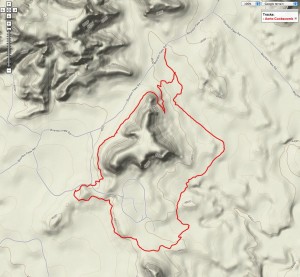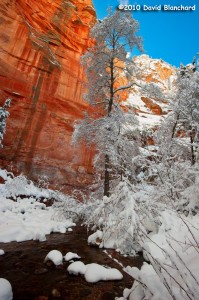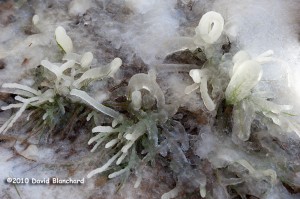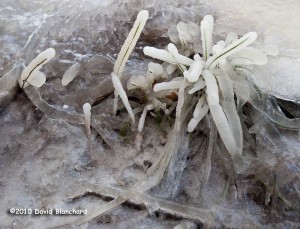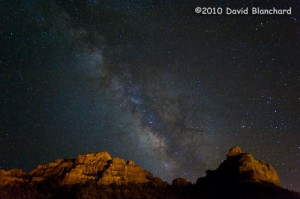Slide Rock State Park is a great place to visit. The water from Oak Creek becomes channeled as it flows through multiple layers of sandstone resulting in some deep and narrow pools of water. On a hot summer day the area is filled with people swimming and having a grand time.
If you arrive here early in the morning you can catch some beautiful light reflecting off the high sandstone cliffs onto the water below.

Earlier this year I had an opportunity to take part in a photo workshop at this location. After that summer workshop I was determined to return in the winter and capture some images with snow on the sandstone. Snow isn’t rare in this location — it’s at an elevation of around 5000 feet, after all. But snow doesn’t last long at these elevations in Arizona, either.

A recent series of snow storms put snow on the ground at elevations even lower than Slide Rock so this was a great opportunity. I left Flagstaff before sunrise and the temperature was a very cold 0°F at an elevation of 7000 feet. By the time I had descended down Oak Creek Canyon to 5000 feet the temperature had warmed to a balmier 19°F. To make it even more uncomfortable, there was a down-canyon wind blowing to bring on some wind chill.
Still, I was determined to try.

The lighting was very challenging as the upper canyon walls began to light up with the rising sun. The normally red rocks were brilliant with snow and it was all too easy to overexpose the upper portions of the canyon walls while being underexposed within the Slide Rock area.
Rather than try to capture “everything” it was more reasonable to focus on the water, rocks and snow that were all still in the deep shadows of the canyon.

As the sun rose higher and the shadows disappeared other photographers arrived. Perhaps they knew better than I that the best light was after the sun was higher in the sky. Or, perhaps just as likely, they weren’t willing to photograph in well below freezing temperatures. Either way, I had the area to myself for over an hour of shooting and I had a great time.

